PDF
6.7MB
Drama – Drama tips for teachers
Preliminaries
If the students are unfamiliar with drama, they may need to be taught some basic rules for drama readiness. Even if they have been in a drama class before, it may be helpful to focus their attention with a themed warm-up game or activity. These exercises are not compulsory, as they can distract students and waste time that would be better spent on drama itself; however, they can be useful to bring the students together and focus their energy to the needs of the drama work to come. The game or warm-up should relate to the theme of the drama or other learning.
See Glossary: Games and Warm-ups
Drama readiness
Students who are new to drama may need to be introduced at the start (or beforehand) to a few basic rules:
- Everybody who is taking part must agree to honour the imaginary world and not break the illusion, or drama cannot happen.
- Participants are encouraged to initiate ideas and suggestions in or out of their roles, but they must be in keeping with and sensitive to the agreed fictional world of the whole group.
- Participants must respond immediately to agreed signals for transition into the dramatic fiction (such as a count-down: 3–2–1) or moving out of it (such as Freeze!). Some teachers use a sound cue such as a tambourine or triangle for these transitions.
- Students, and student groups, must learn to find and use their own space and respect the space of others.
- There should be a neutral space agreed upon for discussion outside the drama: the concept of a 'talk-chair' or a circle (see below) is a common convention.
Tension
Dramatic tension is essential to keep any audience engaged in a drama, and process drama is no exception. First and foremost, students need to understand the 'tension of the task', where in their roles they have a task that is urgent, purposeful, and that will achieve the characters' aims. Tension can come through conflict between or among characters, a dilemma for the characters to face, a mystery, a situation full of suspense, or by introducing something unexpected.
Class management
All drama work, like any teaching, is most effective when it maximises the opportunities for student activity, and drama gives plentiful opportunities for including language use and movement. Drama depends on clear and effective instruction when setting up tasks, and the willingness not to intervene too much by leading all of the talk and discussion. As a process, drama is task-based with high engagement; once the rules are established and agreed, there is usually little off-task behaviour as long as appropriate tensions are built into the fiction. Unexpected hitches and minor loss of concentration can be dealt with unobtrusively, even in-role, while moves from one segment of the drama to another are best controlled via the talk chair.
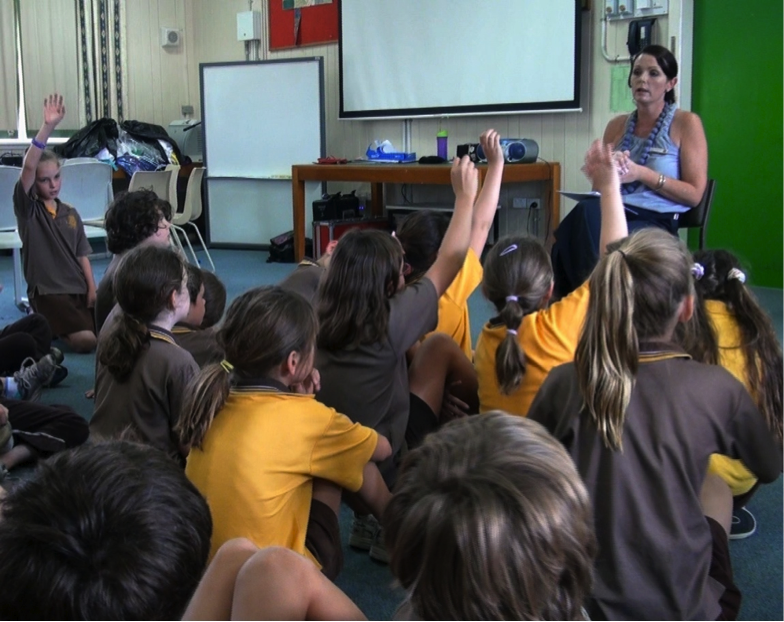
Discussion at the talk chair
The talk chair
The talk chair, mainly but not exclusively inhabited by the teacher, is an agreed space designated for the students and teacher to meet out of role and reflect on the drama they have been doing, discuss the next stage, or get together to replan.
It is good practice to start and finish every session with the talk chair. Some teachers prefer to use the convention of everybody sitting in a circle, which takes more space, but permits eye contact with everyone, and is more democratic – especially if the teacher sits on the floor too!
Groupings
Drama gives the opportunity for the students to work in many different groupings, where they develop social skills by living through the fictional tasks of the characters. The groupings in this drama include the whole group:
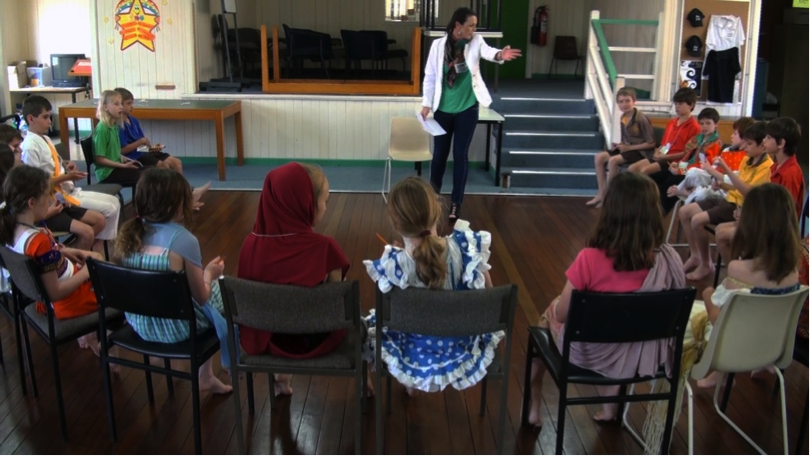
Whole group: the journalists plan their challenge to the Maharajah
Or half-groups:
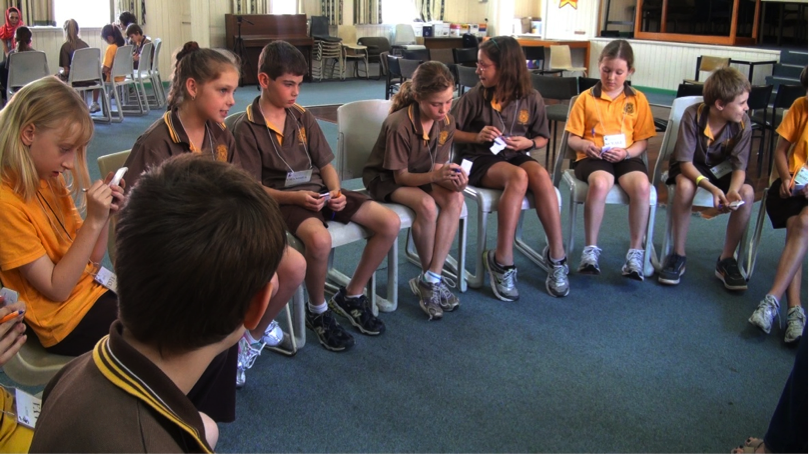
Half groups: the journalists interview mother and child separately
Or groups of 4–6 students:
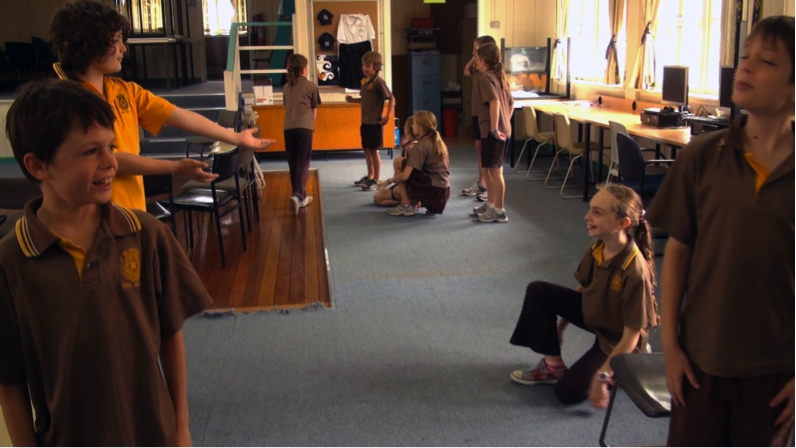
Small groups: improvising life in the child-labour factory
Or students working in pairs – one of the most useful and safe structures for process drama role-play is students working in pairs, where each pair has its own space:
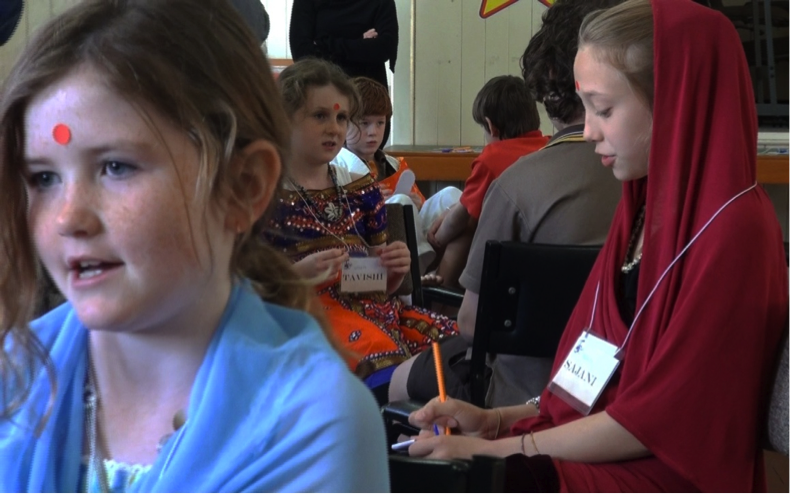
Pairs: I’m going to ask you some questions
Occasionally, students can work by themselves.
Time management
Time in drama starts very slowly, and then flies when the children are engaged. It is important for the teacher to read constantly the dynamics and energy level of the group and ring the changes when necessary, but not before. Trying to rush the drama is always bad practice.
Space management
The students need help to imagine the dramatic setting and not crowd each other. In-role, the space should be congruent; students can sit on the floor at the talk chair:
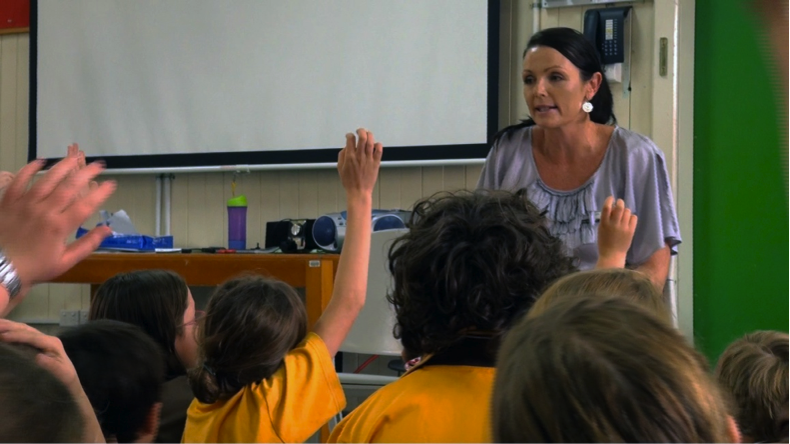
Students can sit on the floor
But as adult reporters at a studio conference or conducting an interview, they must have chairs:
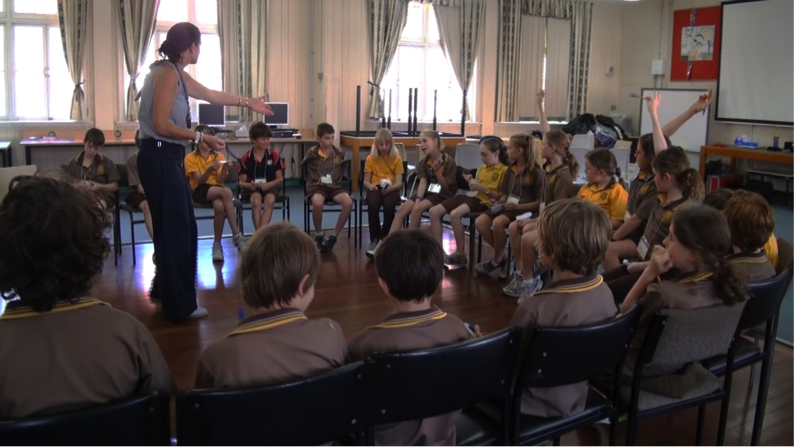
Adults sit on chairs in a studio conference

Respectful interviewers sit on chairs, too
Valuable drama can take place in confined space, such as these small-group presentations:
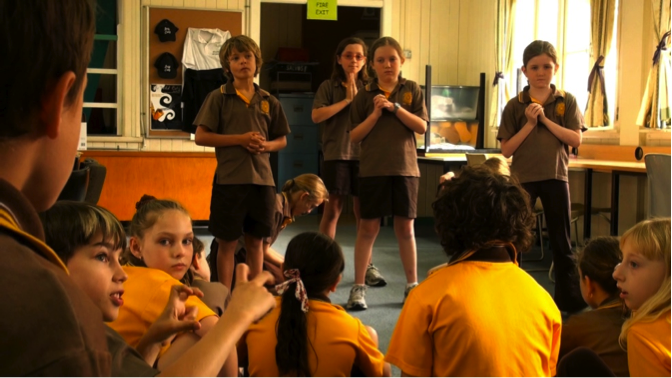
Presentation and discussion in a confined space
Some drama does need space to be cleared to allow the students room to move:

Learning to use space for the ceremony
Props
Belief is built using simple props, such as the students bearing identity badges, notebooks and pencils:
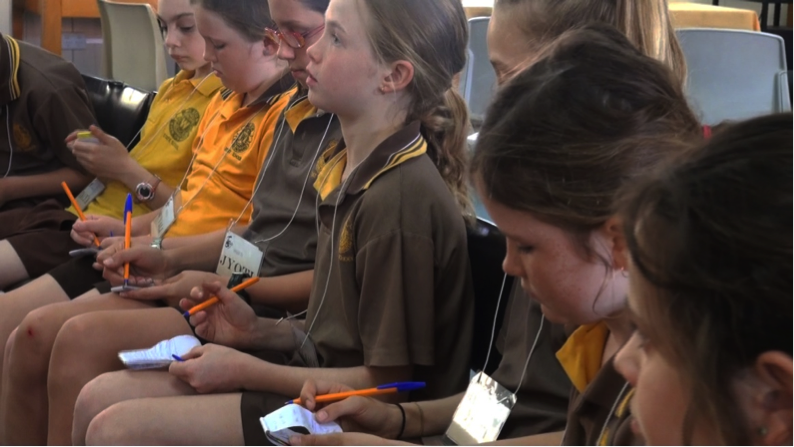
Journalists' essentials
The teacher can share and demonstrate her own role in the same way:
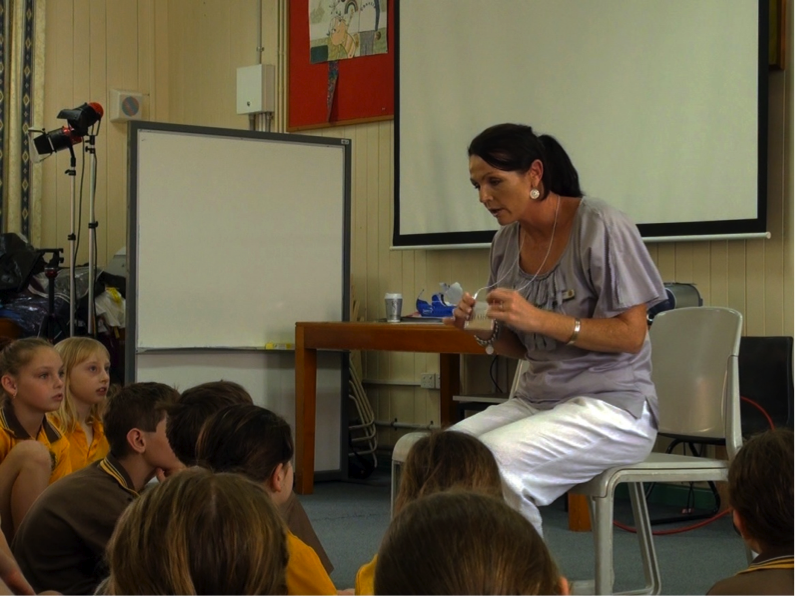
When I wear this I will be your Producer
Alternatively, the teacher can wear a simple garment to signal a role:
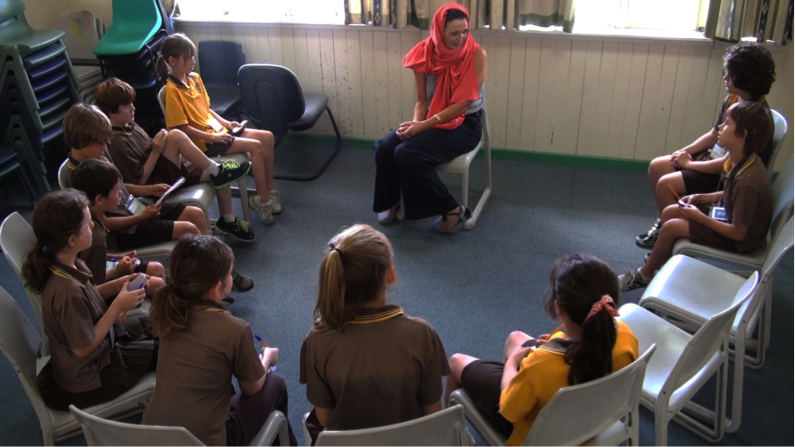
Teacher-in-role as a child labourer
Props should always be minimal. Too many props can be a trap; young children can get distracted playing with them rather than focusing on the drama. Costumes and physical props, while not necessary, can be beneficial in increasing belief for students, as they were in this drama.
Costume
Costume is rarely necessary, and, like props, the use of costume should be minimal. In this drama there were no plans to use any costumes apart from the teacher's shawl. The students raised the stakes themselves when many of them came prepared for the ceremony!
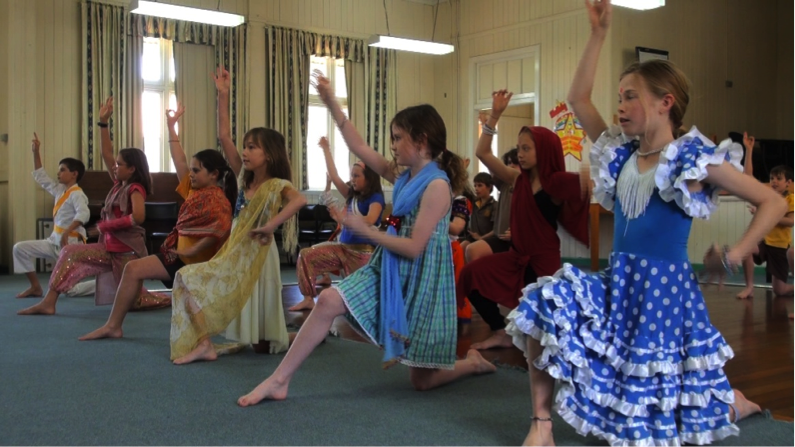
Dressed to kill, for the Maharajah
Reflection
Reflection on the dramatic action is a very important part of the students' learning – they make explicit and articulate in words what they have been living through or presenting. Most of this will happen at the talk chair, as each lesson ends with a discussion where the students respond to and reflect on what they have done:
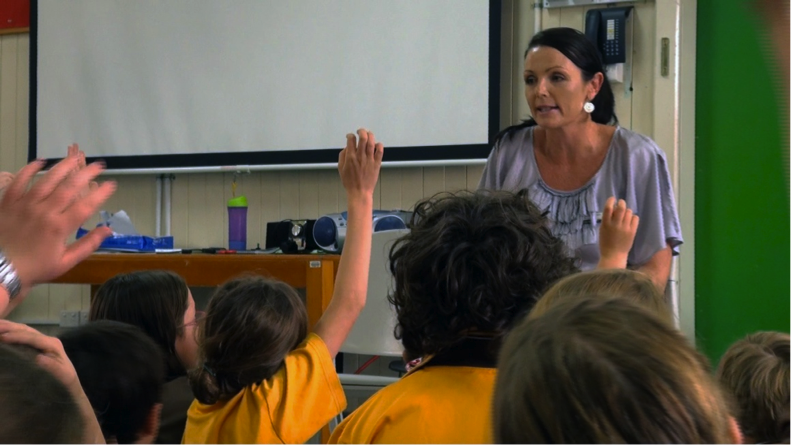
Reflecting on the drama: Was our ceremony as good as it could have been?
However, the reflection can sometimes begin in the drama itself, as the students have to put their learning into words while still in-role:
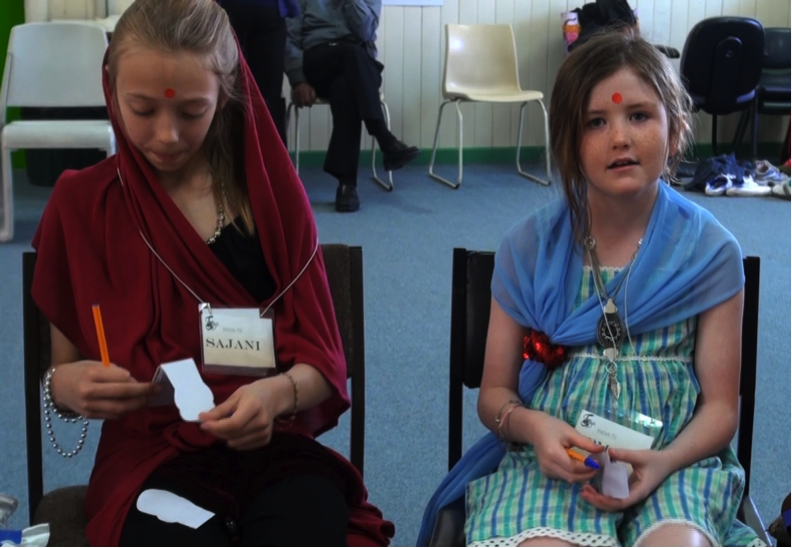
Reflecting-in-role: one journalist speaks to camera, while another checks her notes